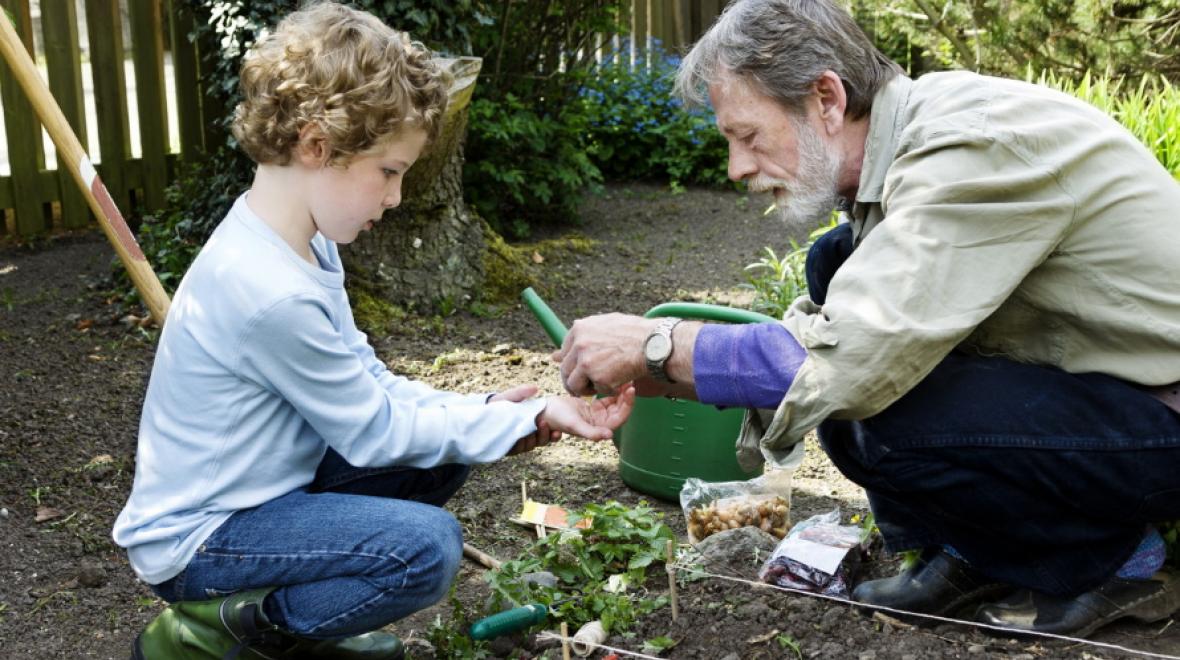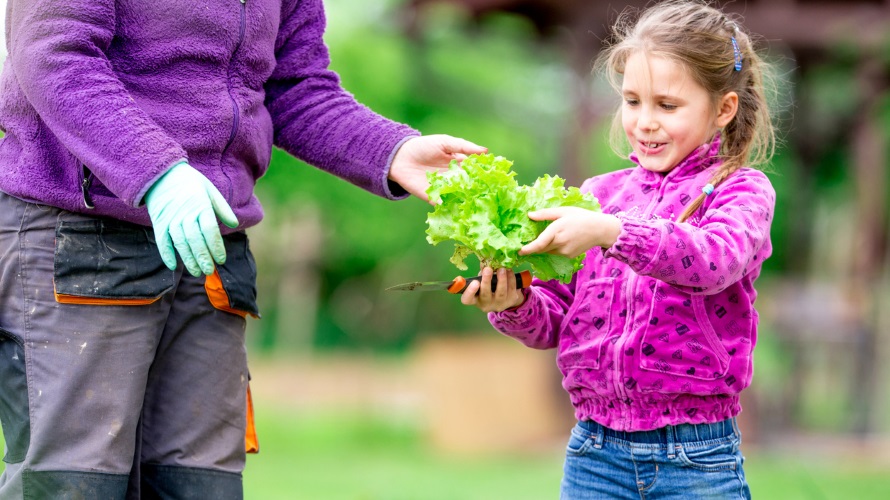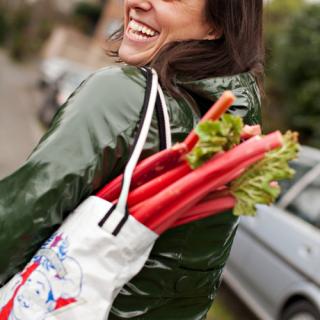
Small-plot gardening is a great way to introduce children of all ages to the pleasure of growing food while producing quick results. In a matter of days, greens will sprout. Seeing greens poking out of the soil will encourage watering and plant care — all great daily chores to keep little ones busy.
Getting started
To start a garden, choose a spot in full sun with a loose garden loam that drains well. It’s okay to use an existing space in one of your landscaping or garden beds, just be sure to dig out the area first and clear out all weeds and roots. Digging in a few scoops of organic compost helps to fertilize and lighten the soil.
What to grow
The ultimate goal for any garden is to be productive, though it’s helpful to choose something kids can harvest independently and appreciate eating.
Snap peas are an excellent choice and can be planted any time in March up to the first two weeks of April. As they grow, vines will need a trellis for support. Construct your own by making a net trellis — sink two six-foot pieces of bamboo into the soil on either end of your row of peas, and build a net-like structure with twine that will provide the peas something to hang on to.
In about two months' time, the vine will have flowered and will start to produce small pea pods. They can be snapped off the vine as they mature — perfect for snacking on as they mature a handful at a time.

Lettuces, too, are wonderful to grow at home. They take up little space, produce (and reproduce!) quickly, and offer fresh greens for salads, or for a nice leafy garnish. Their fast-growing cycle makes them not only highly productive and economical but worthwhile for quick germination results.
Spring is a great time for planting lettuce and most varieties can be planted as early as mid-March to early April. Salad mixes, butterhead, crisphead and arugula can be planted when temperatures are still cool, but warming. Arugula will bolt quickly in warmer weather, so be sure to get it in the ground by mid-April.
Our springs are wet and slug-friendly, so cover your lettuce rows with a floating row cover — a thin polyester landscape cloth used to protect emerging plants from slugs and other insects. Sunlight bleeds through the cloth, and it helps to hold in moisture as the days get warmer. Sow lettuces every two weeks from March through May and keep them under the row cover until they’re literally pushing it off.
To harvest, have children break off the outermost leaves as close to the soil as possible. They can do this with their hands, though older kids may prefer using scissors.
Spring onions are also easy to grow and can be started immediately and sown regularly through June. To plant green onions, sow seeds in shallow rows, and cover lightly with soil. A fast-growing onion, you can snip back the green tops for a chive-like flavor, or you can allow the white onion to bulb out. Green onions sown in March will be ready to harvest by May.
Herbs are easy and fun and can be planted throughout spring. Herbs will single-handedly change the flavor of recipes and most are of cut-and-come variety allowing for long-term production. Kids can cut them with gusto and they tend to grow back quickly. Cilantro can be used on homemade tacos and chives can be added to morning scrambled eggs, both of which most children seem to like. (As a note, basil can’t be planted outdoors until late-May or June.)
How to plant
Make sure to follow the back of the seed packets, which offer great advice on spacing — you don’t want to overcrowd plants. As a general rule of thumb, leave at least eight to 12 inches between rows of crops. Most seeds will be planted only just below the soil line — the smaller the seed the shallower it is planted.
In spring, morning dew will usually provide enough moisture to germinate seeds. Just make sure the seedbeds are moist — they may need an occasional mist from the hose. Once plants are a few inches tall and established, aim to keep the garden plot just damp — don’t over-water and don’t let the soil dry out. In Seattle, we often don’t start actively watering until May.
The true goal is to get kids into the garden and have fun doing it, so great creative and get digging and you’ll have produce to harvest before summer.
Editor’s note: This article was originally published in March 2019, and updated in March 2021.











